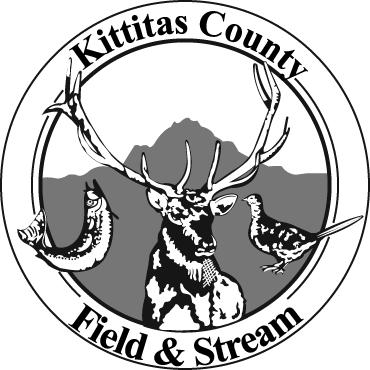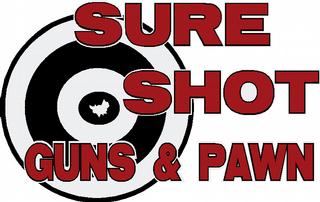You probably noticed it, too, last week. An online reader was kind enough to send me an “Oops, those numbers were off!” He noted that any hunter’s spouse will tell you their hunter spends a lot more than a couple bucks a year. In noting that as U.S. hunter numbers dropped from 12.5 million in 2006 and 13.7 million in 2011, to 11.5 million in 2016, expenditures slumped from $24.7 million in 2006 ($36.3 million in 2011) to $25.6 million in 2016. Oops. Those dollars were billions, with a “b!” Check out the 2016 survey at wsfrprograms.fws.gov/ (click on the survey’s title link) and you’ll see. Nationally, actual average annual expenditures per hunter ranged from $2,187 to $2,652 over the decade.
Those lost expenditures have a direct impact on the money available for managing wildlife and protecting habitat – habitat which supports far more non-hunted species of birds and animals than game birds and animals. Hunters, through the Pittman-Robertson excise taxes (up to $325 million annually) on firearms, ammo, archery equipment and other hunting related gear. This money, along with other state hunting revenues, funds a high percentage of the work done to ensure that our children’s children have wildlife. Lost hunting revenues are a very big deal.
So, where does Washington State fit in this loss of hunters and hunting-related revenue? What about R3 (recruitment, retention and reactivation) efforts? I reached out to Dave Whipple, WDFW’s Hunter Ed Division Manager, and he called on Michael Davenport, Economic Analyst for the department. Michael tracks hunter numbers and license sales – and the ramifications of them to DFW and the state – and Dave works with Wildlife Program folks to stay ahead of – or deal with – the trends Michael uncovers.
Turns out that hunter numbers in Washington reflect that national trend. Dave and Michael sent me current data for statewide license sales over the past decade. Licensing info is simple at one level and very complicated overall. Consider how many licensing packages there are (for example, big game with small game or two big game species vs 4 big game species, and on and on). Kudos to the folks who gather and sort these numbers AND to the folks who work with hunters and hunter numbers in the face of these trends.
The data are pretty interesting – almost fascinating. For a given year, they will show the total licenses sold for hunting a particular critter, and all the combinations within which we may buy our tags. Take deer, for example: buy just a deer license; a deer + elk; a deer + elk + bear + cougar; add a small game license; get a second tag; win a raffle deer license or combo. Now, multiply this by all species we hunt.
For what it’s worth, small game license sales have remained pretty stable over the past decade, while big game license sales have slumped to one degree or another. For the record, somewhere around 137,000 of your closest friends applied for special hunt permits this year. Under some conditions and in some places, you can have seven turkey tags (three hunters bought a seventh tag in 20167.
The simplest way to track Washington hunter numbers is with the “annual unique hunter” count. This is the number of individual purchasers of hunting licenses, no matter how many they bought or how they bought them. In the past decade unique hunter numbers dropped from 196,795 to 179,047 in 2017.
Those 17,748 “lost” hunters did not spend the $40 million or so that we might have expected. This carries a big economic impact to the future of our wildlife – to our outdoor heritage.
So how is the Department of Fish and Wildlife responding?
A formal organized R3 Initiative, with a growing number of partners across the state, is underway. We should see more activity in the next twelve months.
In October of 2013, DFW and our Fish and Wildlife Commission pulled together the Youth Outdoors Initiative. This program is still growing, and is focused on getting youngsters off their digital additions and into outdoor connections. These activities include fishing, hiking, hunting and other ways of connecting with the earth. Programs are in schools around the state.
Recruitment of hunters – youth and otherwise – has been so far largely in the hands of DFW’s regional Hunter Education & Volunteer coordinators, such as our Region 3 guy, Aaron Garcia.
This year, Aaron has ramrodded these local R3 activities: Five turkey hunting clinics (Cabelas and Red’s Fly Shop) with Rich Mann – The Turkey Whisperer; Between April 1st and May 31st, 39 first-time hunters signed up to participate in mentored turkey hunts; Between September 23 and October 31, another 50 first-timers signed up to hunt fall turkeys – some may go on a late fall hunt; On September 23, youth pheasant hunters met mentors with dogs at the Cottonwoods and Sunnyside pheasant release sites, for coaching and hunting – there were many more youth hunters than in previous years; and on September 30, Reds Fly Shop, Yakima Basin Pheasants Forever, and DFW put on a youth-only pheasant hunt for 30 youngsters on the Canyon River Ranch’s hunting area. More clinics and hunts are planned.
This is important to the future of our outdoor heritage – and it is only a start. As R3 activities become available, we all need to be there.




